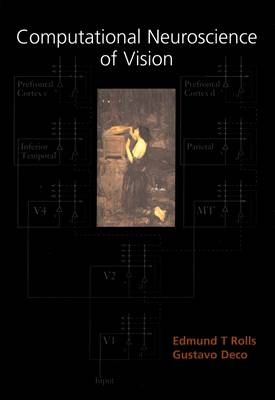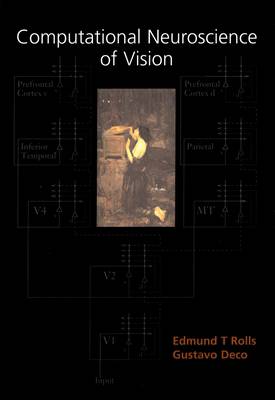
- Retrait gratuit dans votre magasin Club
- 7.000.000 titres dans notre catalogue
- Payer en toute sécurité
- Toujours un magasin près de chez vous
- Retrait gratuit dans votre magasin Club
- 7.000.0000 titres dans notre catalogue
- Payer en toute sécurité
- Toujours un magasin près de chez vous
218,45 €
+ 436 points
Format
Description
The human visual system is so incredibly complex that any attempt to understand how the brain processes visual information necessitates a range of approaches, on a number of different levels. Neurophysiological studies, at the single neuron level are required. We need to bring in neuropsychological studies of brain damaged patients in order to understand what different parts of the visual system do, and what each part is needed for. Neuroimaging work can provide valuable information on the locations in the brain where these processes are taking place. Additionally required is an understanding of the biophysical and synaptic properties of neurons to see how the computing elements of the brain work. A knowledge of the anatomical and functional architecture of the cortex further enhances our understanding. Finally, neural computation methods can bring together the evidence to understand how the visual system actually works. Most of the books looking at the topic of vision tend to
take a particular approach and exclude the work and data being obtained from studies adopting other approaches This important new book from the eminent neuroscientist, Edmund Rolls (in collaboration with Gustavo Deco), is unique in combining all these approaches within a single volume to further our understanding of vision. This original approach enables a far more complete understanding of a very complex subject. This is a book which will be of great value to psychologists interested in vision and attentional processes, neuroscientists, and vision scientists
take a particular approach and exclude the work and data being obtained from studies adopting other approaches This important new book from the eminent neuroscientist, Edmund Rolls (in collaboration with Gustavo Deco), is unique in combining all these approaches within a single volume to further our understanding of vision. This original approach enables a far more complete understanding of a very complex subject. This is a book which will be of great value to psychologists interested in vision and attentional processes, neuroscientists, and vision scientists
Spécifications
Parties prenantes
- Auteur(s) :
- Editeur:
Contenu
- Nombre de pages :
- 592
- Langue:
- Anglais
Caractéristiques
- EAN:
- 9780198524892
- Date de parution :
- 10-01-02
- Format:
- Livre relié
- Format numérique:
- Genaaid
- Dimensions :
- 244 mm x 170 mm
- Poids :
- 1170 g

Les avis
Nous publions uniquement les avis qui respectent les conditions requises. Consultez nos conditions pour les avis.






